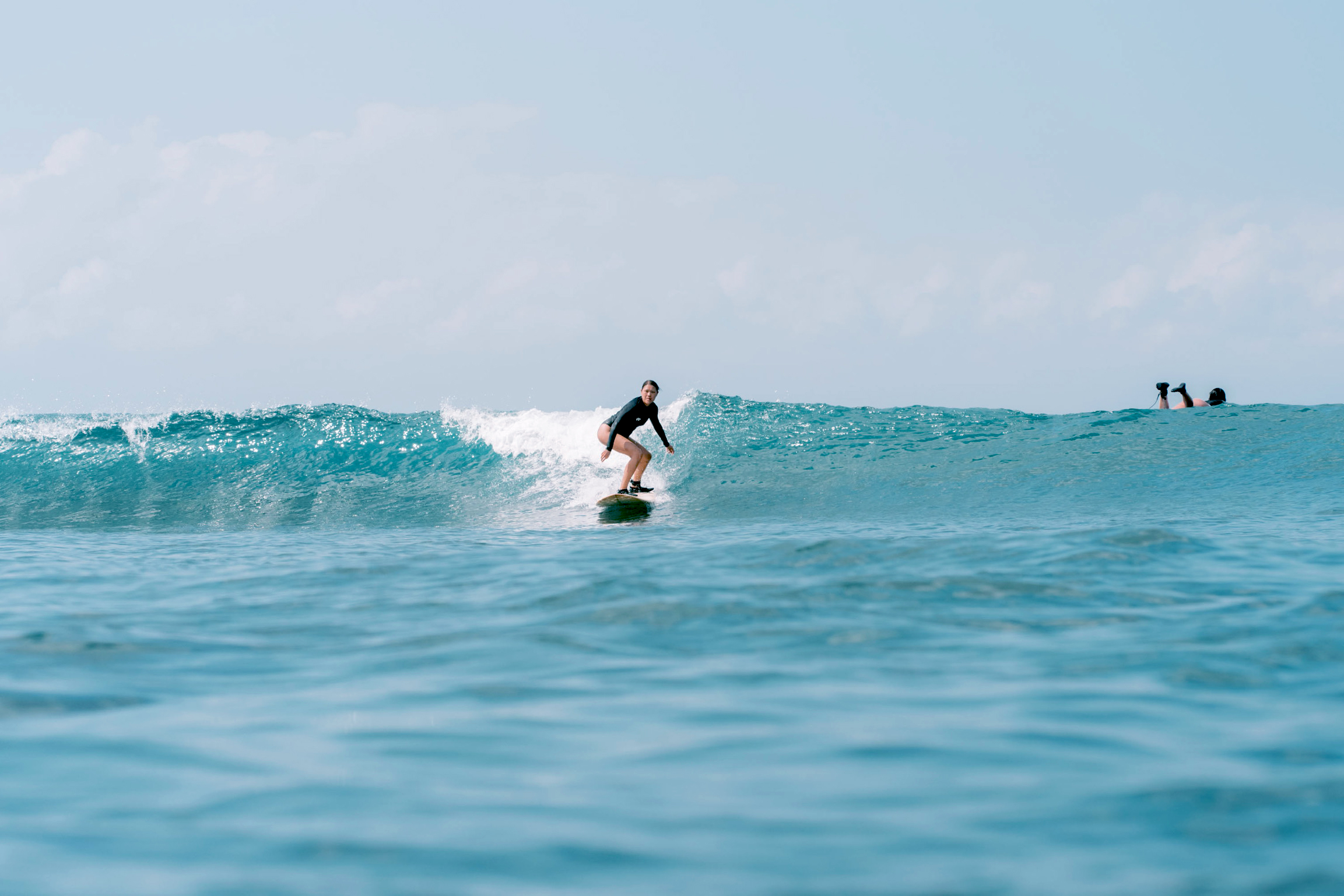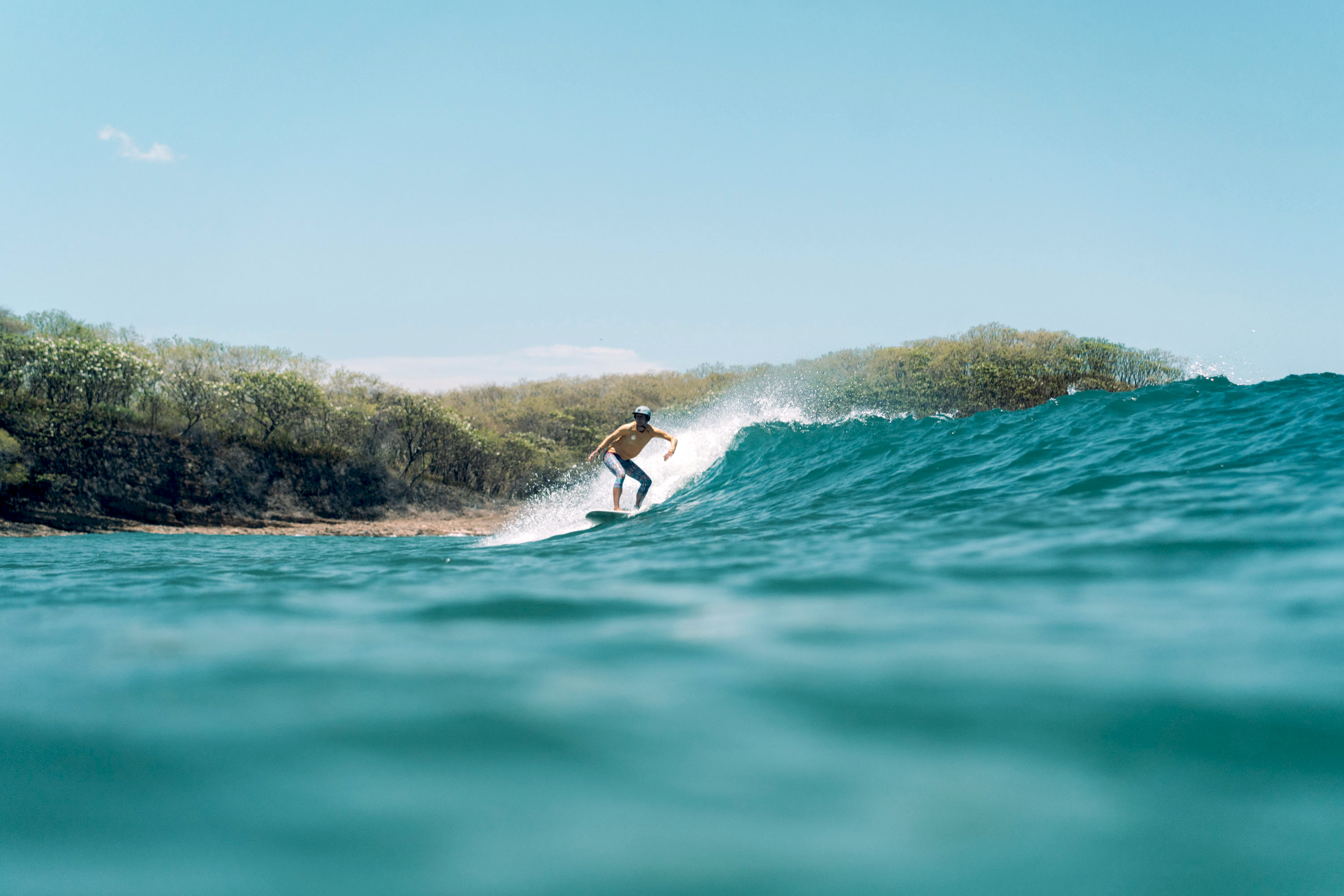How to Surf : Tutorials and Tips

How to Surf [with Barefoot] - Discover our online surf tutorials to learn to surf, catch unbroken waves, eliminate bad habits, increase speed, duck diving, mobility on the surfboard, etiquette and more. Enjoy 4 free surf tutorials to discover how valuable our surf lessons are for your personal progression as a competent and enjoyable surfer. https://tutorials.barefootsurftravel.com/

Surf like a pro... after just one day of surf lessons
1. You won't surf well if you have the wrong board. Beginners make that bad decision all the time because they don't have any idea where to start. Problem is that you need to get a board BEFORE you hit the waves. Unless you just go to a surf camp and start with what the instructors tell you to grab, most first time surfers buys a surfboard and go to the beach by themselves or with some friends that are intermediate level. It's tempting to just follow the advice of the vendor and pick a high-performance fish board made for high performance fun. Since you want to become a skilled surfer on the surfer, what not just start with the good stuff. Right? Problem is that a light, short, narrow and banana shaped board will instantly limit the way you learn how to surf, eliminate bad habits and acquire the proper technique right off the bat. Such a surfboard is not forgiving and you might spend seasons literally struggling to just stand on it longer than 5 seconds at a time. That's the best way to get discouraged and give up for good and that's why there are so many performance boards for sale on Craigslist, Kijiji, eBay, etc. On the other hand, a flat, wide and heavy board will "wider" the volume of water. As a result, it will allow you to quickly surf choppy and bad waves as well as making your first cool moves on various wave sections.
2. Surfing small waves might seem difficult at first because there's not much speed you can use. So, the key is to generate your own speed. If you know precisely how to take off and position yourself, you won't waste time and instantly start generating speed. Once you know how to do that, you don't need to find the best spots. That will make a difference between surfing 10 waves on your first day and... 200 waves! The keyword here is : learn to harness the small waves at the right moment.
3. Letting your body drift along pockets and lips before they break makes padding enjoyable by not tiring yourself. The trick is to follow the right paths and avoid rolling into small waves while paddling desperately like a beginner. That way, you keep your energy required when it's the right time to jump out of water and stood up on the board.
4. A small wave is more forgiving than a large one and it allows you to tick-tack on it like on a skateboard. Tick-tacking is the method skateboarders use on the street to gain speed by swinging the back end and front end of their skateboard by constantly throwing their body left and right. You can achieve the same result with a series of heelside to toeside kickturns. To work, you have to keep your both feet on the board.
5. Fix any initial mistake when you start manoeuvring because a bad start will make your board losing its speed for the rest of the way. That being said, your first turn is a vital element. Then, ride the small waves like a roundhouse cutback and do your best to just rebound off the foam of each wave. Whenever you fall back into the pocket, it's easy to achieve speed generation.
6. Avoid air reverse movements because it will ruin your speed. Only the advanced surfers can repeat such a move more than once. So, spend your time in the water wisely and keep hitting wave after wave. The more experience you get, the better you will become.
7. Bottom turns are not hard to achieve on small waves. There's a huge difference between dropping down from 6 feet and 3 feet. Since you are closer to the bottom, you don't have to manage a twilight zone or being perfectly balanced.
8. Always look where you are going next and not your feet. Stay low and forget about your legs. Staying low helps to create torque and having most of your weight on your toes stabilize the surfboard. If you want to look like a more advanced surfer than you actually are, always use your leading arm to point your direction and lower it only when you finally hit the peak of the wave.

*Note
: All these listed websites were crawled by Web Data
Extractor (version 5.0) or were directly submited
by people through add url
form. |

